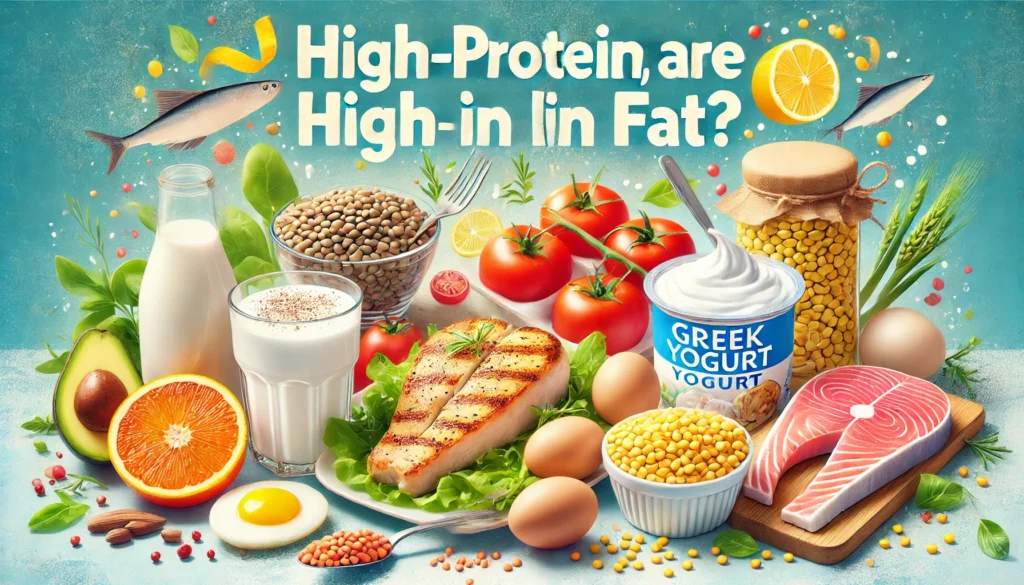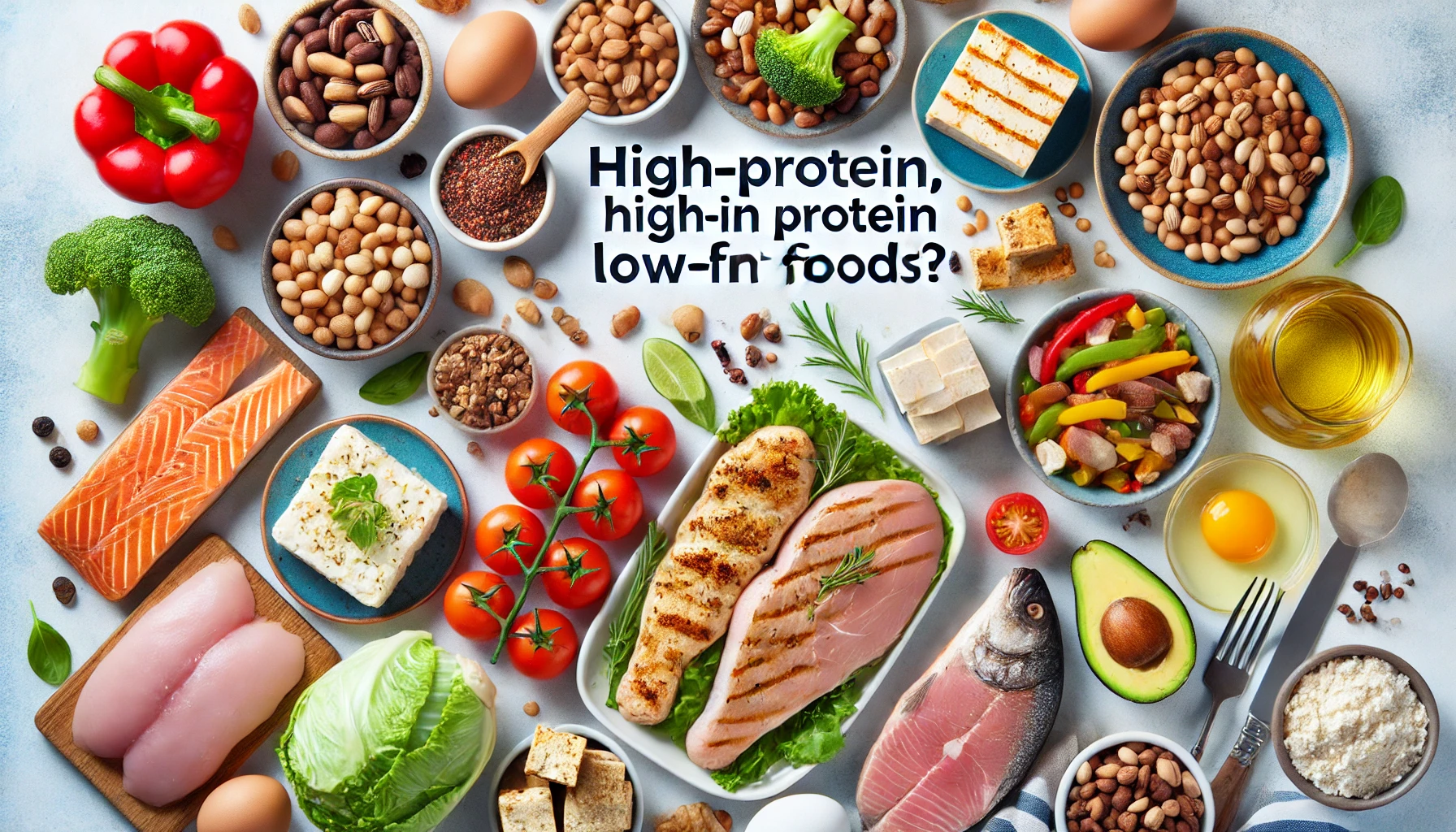Introduction
What foods are high in protein but low in fat? Are you looking for healthy food options that are high in protein but low in fat? Whether you want to build muscle, lose weight, or maintain a balanced diet, choosing the right protein sources can make a huge difference. Protein is essential for muscle growth, metabolism, and overall health, but many high-protein foods also contain unhealthy fats.
In this guide, we’ll explore the best lean protein sources, their benefits, and how to incorporate them into your diet for a healthier lifestyle. Keep reading to discover the top high-protein, low-fat foods and how they can help you reach your health and fitness goals!
Table of Contents

1. Why Is Protein Important?
Protein is one of the three macronutrients essential for a healthy body. It plays a crucial role in:
- Building and repairing muscles
- Supporting metabolism and weight management
- Keeping you full and reducing cravings
- Boosting immunity and overall body function
But not all protein sources are created equal. Some are packed with unhealthy fats that can lead to weight gain, high cholesterol, and other health issues. That’s why choosing lean protein sources is key!
2. Top 15 Foods That Are High in Protein but Low in Fat
Here are some of the best options to include in your diet:
1. Skinless Chicken Breast
- Protein per 100g: ~31g
- Fat per 100g: ~3.6g
- Why It’s Great: One of the leanest protein sources, chicken breast is perfect for muscle building and weight loss. It’s easy to prepare and versatile in various recipes.
How to Use:
- Grilled with herbs and spices
- Added to salads, wraps, or stir-fries
2. Egg Whites
- Protein per 100g: ~11g
- Fat per 100g: ~0g
- Why It’s Great: Egg whites contain pure protein with no fat, making them an ideal choice for weight management.
How to Use:
- Scrambled or boiled
- Added to smoothies or protein pancakes
3. Greek Yogurt (Non-Fat)
- Protein per 100g: ~10g
- Fat per 100g: ~0g
- Why It’s Great: A great dairy option that’s packed with protein and probiotics for gut health.
How to Use:
- As a breakfast with fruits and nuts
- In smoothies or as a base for healthy dressings
4. Tuna (Canned in Water)
- Protein per 100g: ~25g
- Fat per 100g: ~1g
- Why It’s Great: Tuna is an excellent lean protein choice and is rich in omega-3s.
How to Use:
- In sandwiches, wraps, or salads
- As a high-protein snack
5. Lentils
- Protein per 100g: ~9g
- Fat per 100g: ~0.4g
- Why It’s Great: A plant-based protein source loaded with fiber, helping digestion and keeping you full.
How to Use:
- In soups, stews, or salads
- As a base for veggie burgers
3. Tips for Adding More Lean Protein to Your Diet
- Swap high-fat meats with lean alternatives – Choose turkey, chicken, or fish over fatty cuts of beef or pork.
- Incorporate plant-based proteins – Lentils, beans, and tofu are great meat alternatives.
- Use low-fat dairy options – Greek yogurt, cottage cheese, and skim milk are protein-rich and low in fat.
- Opt for egg whites over whole eggs – This reduces fat intake while maintaining high protein.
- Include seafood – Fish like cod, tilapia, and shrimp provide protein with minimal fat.
4. Frequently Asked Questions (FAQs)
Q1: Can I eat a high-protein diet every day?
Yes! A balanced high-protein diet can help with weight management, muscle growth, and overall health. Just ensure you’re also consuming enough fiber and healthy fats.
Q2: What is the best protein for weight loss?
Skinless chicken breast, egg whites, and non-fat Greek yogurt are some of the best protein options for weight loss due to their low fat and high protein content.
Q3: Is plant-based protein as effective as animal protein?
Yes! While plant-based proteins may have different amino acid profiles, combining sources like lentils, beans, and quinoa can provide complete protein.
Q4: How much protein should I eat daily?
It depends on your goals. For general health, 0.8g per kg of body weight is recommended, while athletes and those building muscle may need more.
Q5: What is a quick high-protein snack?
Tuna, Greek yogurt, cottage cheese, or boiled egg whites are great high-protein snacks.
Q6: Is too much protein bad for you?
Excessive protein can strain the kidneys, so balance it with other macronutrients and drink plenty of water.
Q7: Can protein help with muscle gain?
Absolutely! Protein is essential for muscle repair and growth. Pair it with strength training for best results.
Conclusion
Eating high-protein, low-fat foods is one of the best ways to stay fit, build muscle, and manage weight. Whether you’re a fitness enthusiast or just looking for healthier food choices, incorporating these protein-rich foods into your diet can help you achieve your health goals.
If you found this article helpful, share it with your friends and family! For more healthy eating tips, check out our related guides.
Learn more about protein and its health benefits. Mayo Clinic Protein Guide.
Read Also:- What food is high in protein and low in fat?
